Imagine stepping into your garden and being transported to a tropical paradise. The sun-kissed leaves swaying gently in the breeze, casting a mesmerizing shadow on the ground. The vibrant colors, from deep greens to rich purples, adding a touch of exotic allure to your landscape. This is the enchanting world of Cordyline Australis, also known as cabbage palms.
Hi, I’m a passionate gardener, and I want to share with you my expert tips for caring for Cordyline Australis. These stunning plants, native to New Zealand, are the epitome of elegance and beauty. Whether you have a spacious garden or a cozy balcony, cordyline australis can bring a touch of the tropics to your outdoor space.
Planting cordyline australis is like embarking on a journey of transformation. As you carefully place the young plant into the soil, you can’t help but imagine how it will grow and flourish over time. With the right care and attention, your cordyline australis can become a centerpiece, captivating all who lay eyes on it.
Varieties of Cordyline Australis
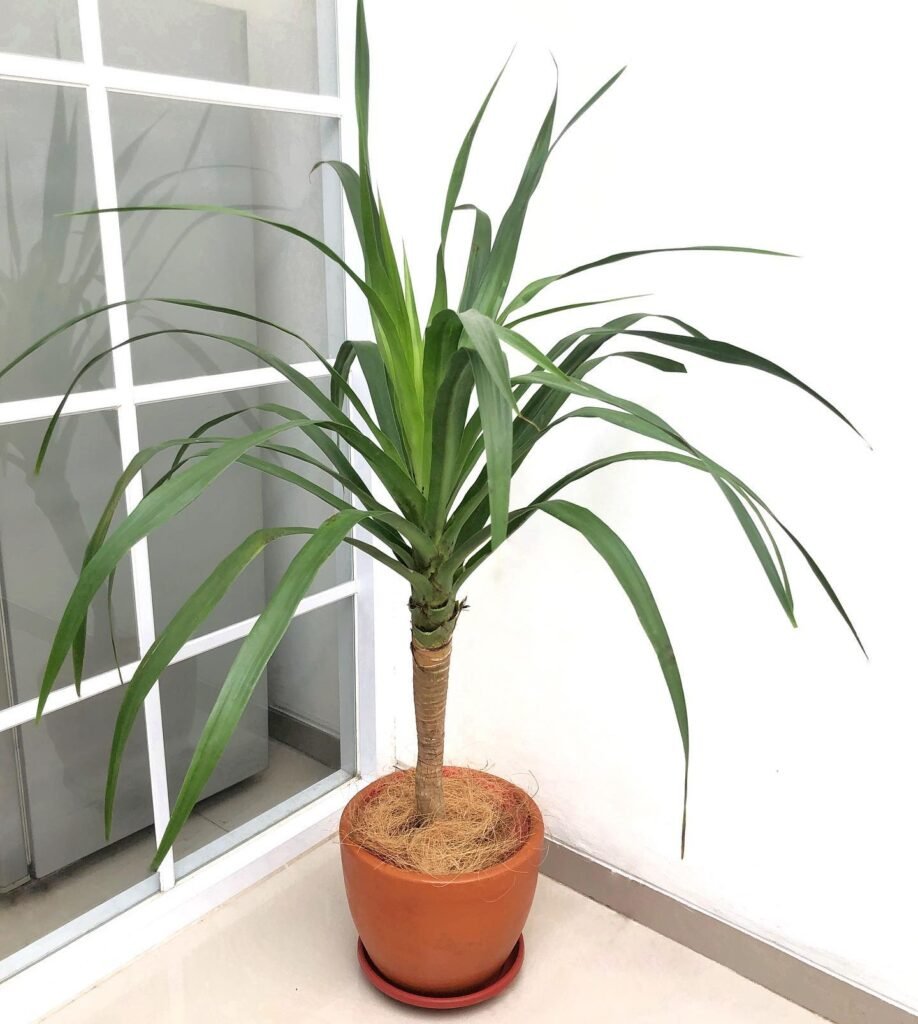

Cordyline australis offers a diverse range of varieties, each with its own unique foliage colour and pattern. These variations bring a captivating charm to any garden or indoor space. Some popular cordyline australis varieties include:
- Cordyline Australis Red Star: This variety showcases striking burgundy-red foliage, adding a bold and vibrant touch to any landscape. (Right Image)
- Cordyline Australis Verde: Featuring bright green leaves, this variety exudes a fresh and lively aesthetic, making it a popular choice for both modern and traditional gardens.
- Cordyline Australis Red: With crimson-red foliage, this variety adds a dramatic and eye-catching element to any outdoor or indoor setting.
These cordyline australis varieties offer an array of colours and patterns to suit different design preferences and complement various garden themes. Whether you prefer the rich hues of red or the vibrant charm of green, these varieties will surely captivate and enhance the beauty of your garden.
 Cordyline australis, known as the Cabbage Tree, plays an essential ecological role in its native New Zealand. It serves as a crucial habitat and food source for a variety of native wildlife. The nectar from its flowers is a favorite among bees and native birds, such as the tui and bellbird, helping to sustain pollinator populations. This highlights its significance beyond the garden, contributing to biodiversity and supporting ecosystems.
Cordyline australis, known as the Cabbage Tree, plays an essential ecological role in its native New Zealand. It serves as a crucial habitat and food source for a variety of native wildlife. The nectar from its flowers is a favorite among bees and native birds, such as the tui and bellbird, helping to sustain pollinator populations. This highlights its significance beyond the garden, contributing to biodiversity and supporting ecosystems.
Light Requirements for Cordyline Australis
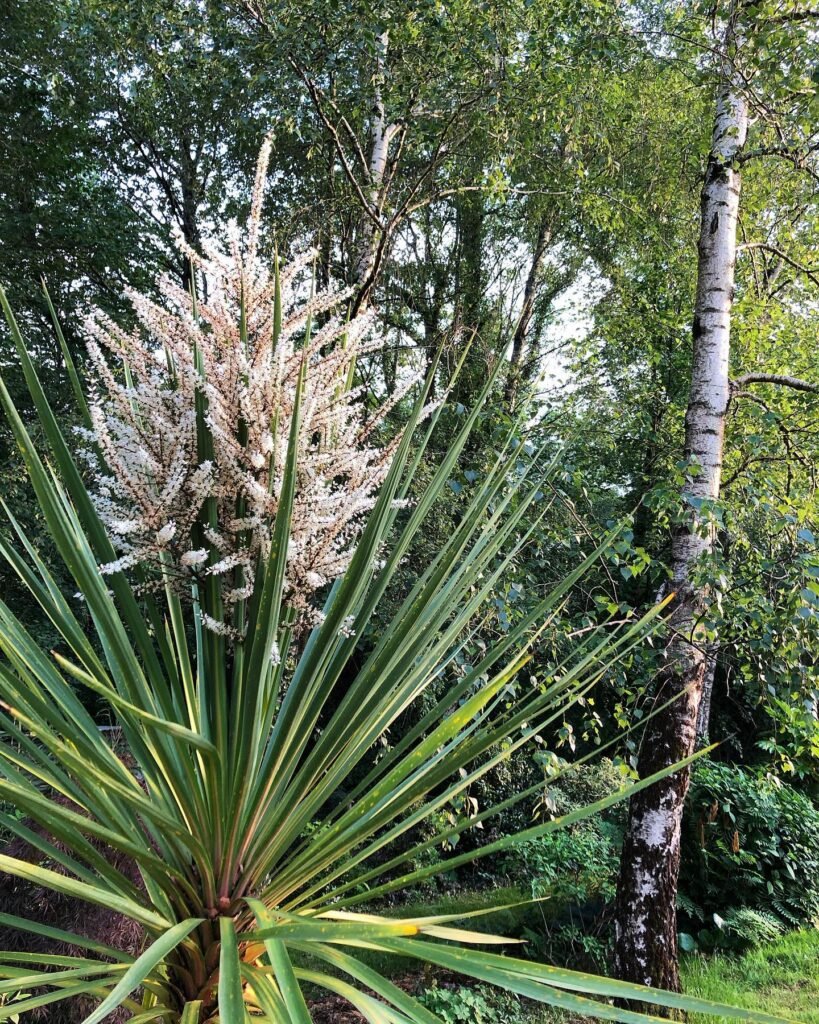

Cordyline australis, commonly known as cabbage palms, thrives in a range of light conditions, from full sun to light shade. The light preferences may vary depending on the foliage colour of the plant.
Full Sun for Green-leaved Varieties
Green-leaved Cordyline australis varieties, such as the popular Cordyline australis ‘Dragoon’, prefer full sun to showcase their vibrant green foliage. Placing them in areas with direct sunlight will bring out the best in their colours and promote healthy growth.
Light Shade for Colorful and Variegated Varieties
For cordyline australis varieties with colorful or variegated leaves, such as Cordyline australis ‘Torbay Dazzler’, providing light shade is beneficial. This helps protect their rich hues from fading under intense sunlight, ensuring their beauty remains intact.
In the United Kingdom, cordyline australis can be grown outdoors in both sun and light shade. However, it is essential to select a warm, sheltered position for these plants. The cordyline australis uk care requires safeguarding them from cold winds and frost, which can cause damage to the plant’s foliage and overall health.

Watering Tips for Cordyline Australis
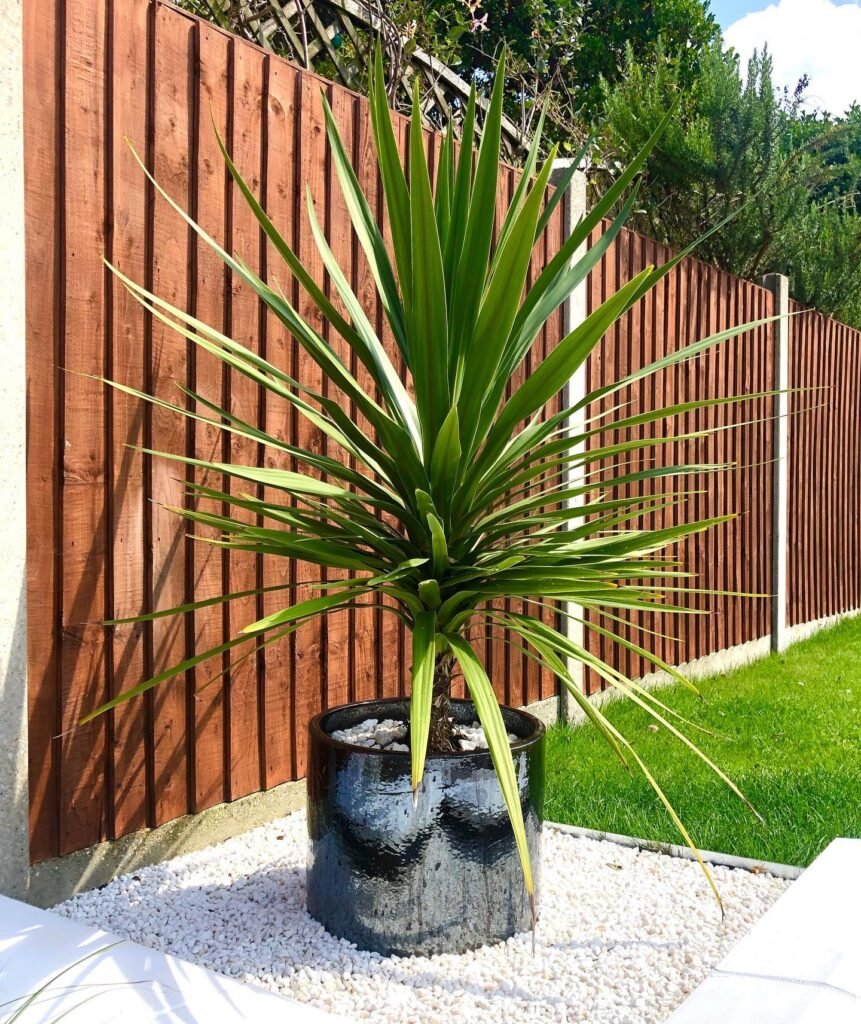
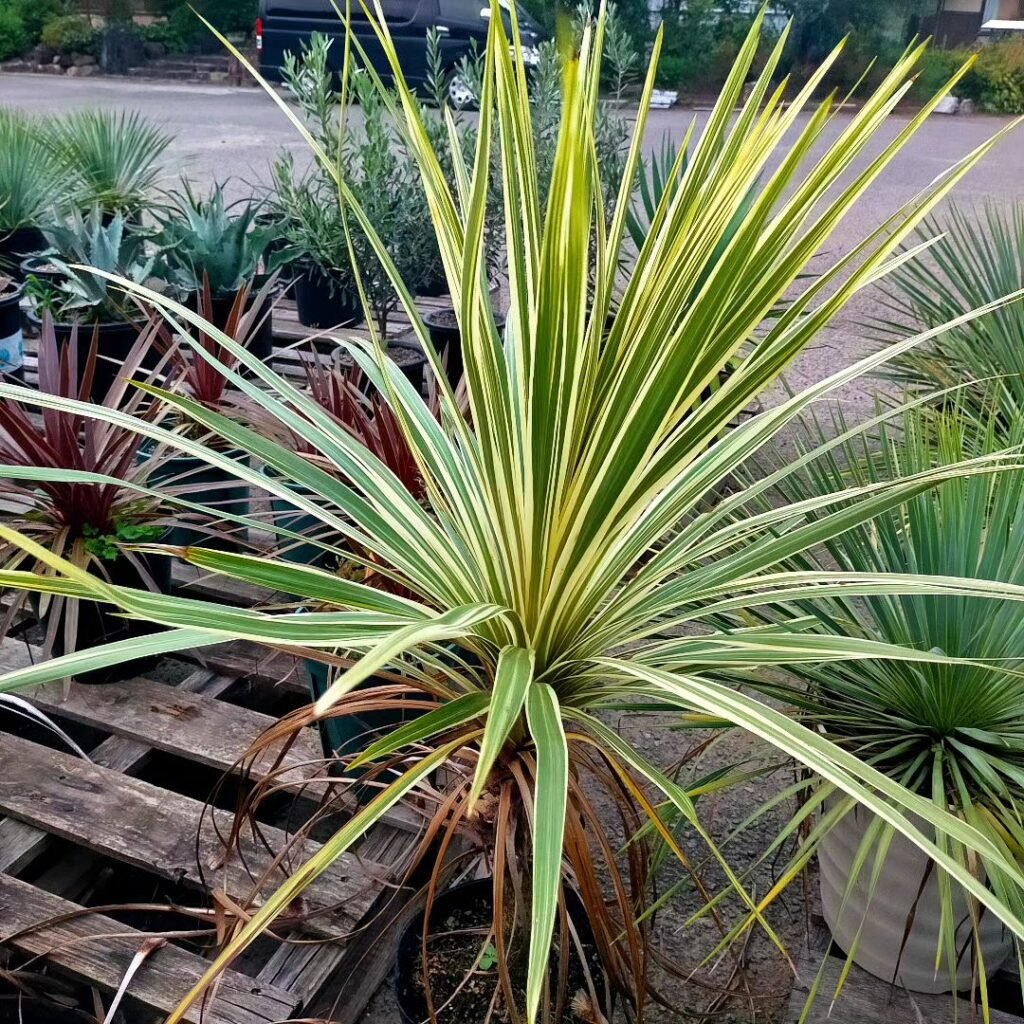
When it comes to watering cordyline australis, there are a few key things to keep in mind for optimal care.
During the first summer after planting, it is important to water newly planted cordyline australis regularly. This helps promote the establishment of a strong root system, which is crucial for the plant’s long-term health.
Once cordyline australis is established, it becomes drought tolerant and typically does not require regular watering. These hardy plants can survive with minimal water, making them a great choice for low-maintenance gardens.
However, if you are growing cordyline australis in containers, it’s important to note that they may require more frequent watering during the growing season. Container-grown plants have limited access to water, so it’s crucial to monitor soil moisture levels and water as needed.
When watering cordyline australis, always aim for a balance. Over-watering can lead to root rot, which can severely damage the plant. It’s best to allow the soil to dry out between waterings to avoid this issue.
During the winter months, cordyline australis in containers should be kept fairly dry to prevent waterlogged soil. Watering should be minimized during this period to avoid the risk of root rot caused by excess moisture.
Remember, when caring for cordyline australis, strike a balance in watering to ensure the plant’s health and longevity.

Fertilizing and Soil for Cordyline Australis


Cordyline australis, commonly known as cabbage palms, typically does not require regular feeding when grown directly in the ground. However, if you have cordyline australis plants in containers, they can benefit from a balanced liquid fertilizer applied from spring to late summer. This will help provide the necessary nutrients for their growth and development.
When it comes to planting cordyline australis in containers, it’s important to choose the right soil mix. Opt for a well-drained blend such as John Innes No 2 or No 3 compost, which can be further enhanced with added grit to improve drainage. The soil should be fertile to support the healthy growth of your cordyline australis plants.
Remember to:
- Use a well-drained soil mix such as John Innes No 2 or No 3 compost
- Add grit to the mix for improved drainage
- Ensure the soil is fertile and supports healthy growth
“Providing a suitable soil mix is crucial for the well-being of your cordyline australis plants in containers. It allows for proper root development and ensures the plant receives the necessary nutrients.”

Pruning and Maintenance of Cordyline Australis


Keeping your Cordyline Australis in shape and well-maintained is essential for its overall health and aesthetic appeal. While pruning is generally not required, occasional trimming can help manage height and shape. Here are some tips for pruning and maintaining your Cordyline Australis:
1. Pruning:
If your Cordyline Australis becomes too tall or starts losing its shape, it can be pruned in mid-spring. To do this, you can simply saw through the main stem just above a side shoot or at ground level. This will encourage new growth and help maintain a compact form.
2. Removing Flowering Spikes:
Established Cordyline Australis plants may produce flowering spikes during hot summers. While these spikes can add an interesting touch, they can also be removed if desired. Alternatively, you can leave them to produce small berries, which can attract wildlife to your garden.
3. Regular Maintenance:
Regular maintenance includes removing older leaves as they naturally yellow and wither. This helps the plant allocate its energy to new growth. Additionally, ensuring a well-drained soil and maintaining a regular watering schedule are important for optimal growth and overall health.
By following these simple tips for pruning and maintenance, you can keep your Cordyline Australis looking vibrant and thriving. Remember, minimal intervention is usually enough, allowing this low-maintenance plant to flourish in your garden.

Propagating Cordyline Australis

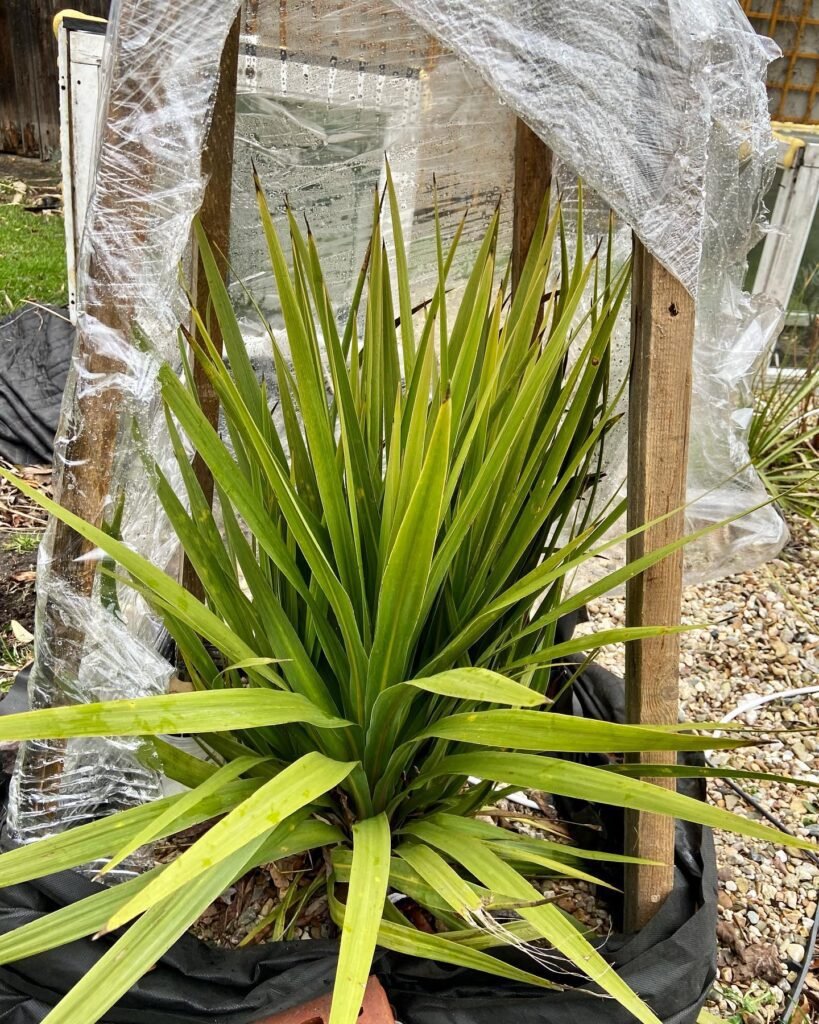
When it comes to propagating Cordyline Australis, there are a few different methods you can try. One option is to use seeds, which can be sown in spring at a temperature of 16°C. Another method is taking cuttings from mature plants, either terminal (shoot tip) cuttings or stem-section cuttings. These cuttings should be planted in well-drained cuttings compost and kept warm and moist until rooting occurs.
Suckers, which are shoots emerging from the base of the plant, can also be used for propagation. Simply sever the suckers from the main plant in spring and pot them up individually. This allows for the creation of new Cordyline Australis plants that you can keep for yourself or share with others.
By using these propagation methods, you can expand your Cordyline Australis collection and enjoy the beauty of these stunning plants in multiple locations. Give it a try and see how successful you can be with propagating your Cordyline Australis!

Repotting Tips for Cordyline Australis
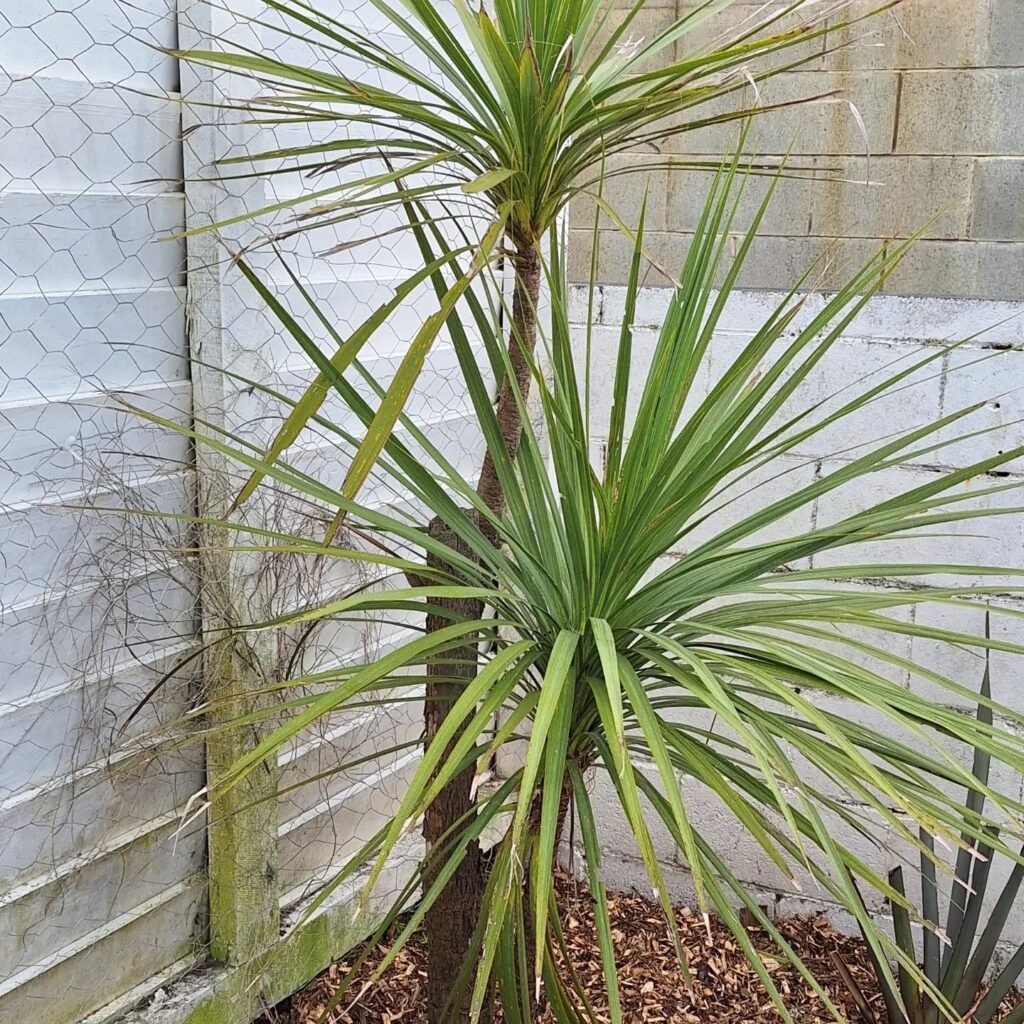
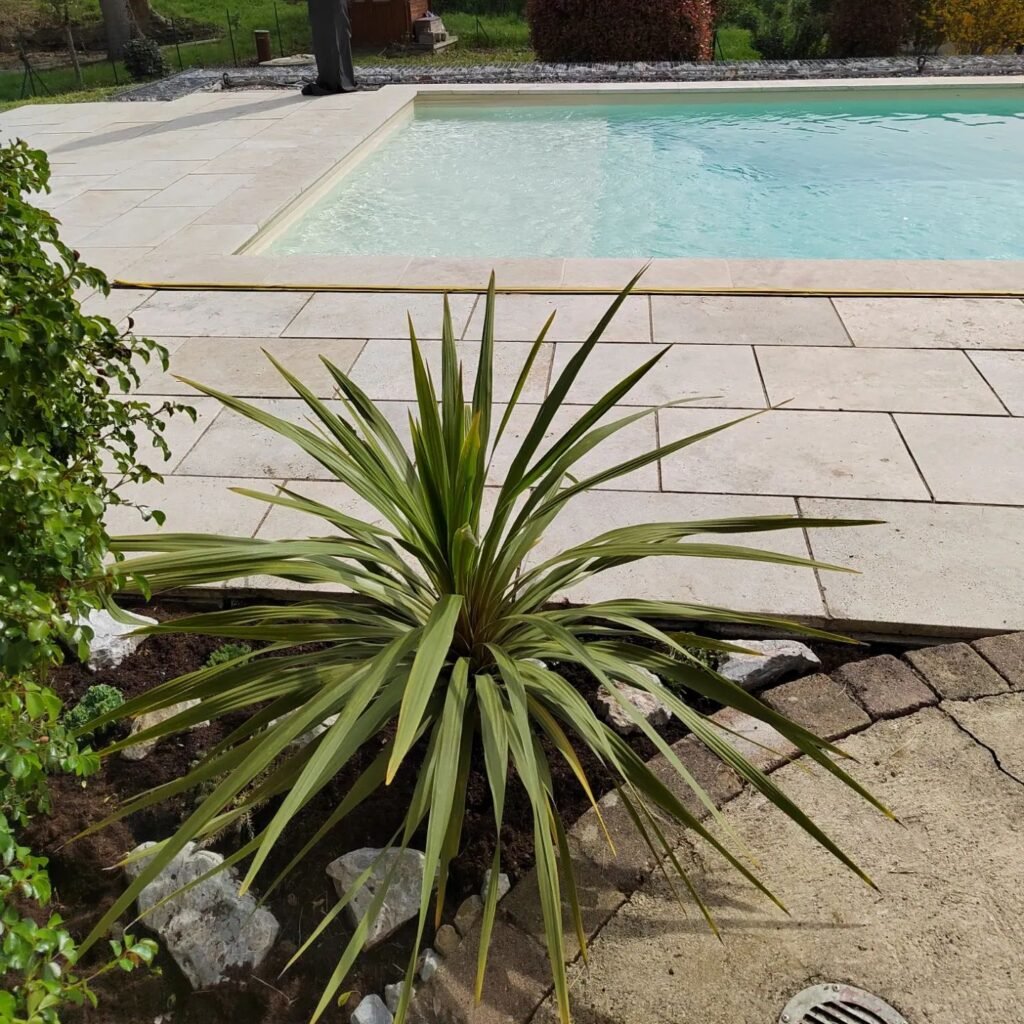
Cordyline australis, with its slow growth rate, typically does not require frequent repotting. However, if you notice the roots have outgrown the original pot and are touching the sides, it might be time to consider repotting the plant.
When repotting, it’s important to choose a well-structured, loose soil mix with good drainage. This will help prevent waterlogging and ensure optimal growth for your cordyline australis.
Repotting can be done every two to three years, providing enough time for the plant to settle and establish its root system. During this process, select a pot that provides enough space for your cordyline australis to grow comfortably.
Remember, proper repotting techniques contribute to the overall health and well-being of your cordyline australis, keeping it thriving and vibrant in your garden or indoor space.
Cordyline Australis and Winter Protection
Cordyline australis, also known as the New Zealand cabbage tree, is a stunning plant that can bring a touch of the tropics to any UK garden. However, it is important to note that cordyline australis is not fully hardy in the UK and may require some winter protection, especially in colder areas.
In mild regions, cordyline australis can survive outdoors during the winter months. However, young plants and those with colored foliage are more susceptible to winter damage. To protect your cordyline australis from frost damage, there are a few precautions you can take.
- For cordyline australis growing in the ground, tie the foliage together gently with twine or string. This will help protect the leaves from excessive cold and wind.
- Next, wrap the main stem of the plant with several layers of fleece. This additional layer of insulation will protect the vulnerable core of the plant.
- If your cordyline australis is grown in a container, consider moving it to a frost-free location such as a conservatory or garage. Alternatively, you can wrap the container with bubble polythene and protect the foliage with fleece.
It is also important to note that there are some tender species of cordyline, such as Cordyline marginata and Cordyline fruticosa, that are more susceptible to cold temperatures. For these species, it is recommended to bring them indoors or into a heated greenhouse over the winter months.
By taking these simple steps to protect your cordyline australis from frost damage, you can ensure that it thrives and remains healthy throughout the winter season. With a little extra care, you can continue to enjoy the beauty of this exotic plant in your UK garden.
 The Cabbage Tree (Cordyline australis) is known for its distinctive look and versatility. Originating from New Zealand, it was essential in Maori culture for making various items due to its strong fibres. It’s remarkably adaptable, thriving in diverse environments, showcasing its resilience and utility.
The Cabbage Tree (Cordyline australis) is known for its distinctive look and versatility. Originating from New Zealand, it was essential in Maori culture for making various items due to its strong fibres. It’s remarkably adaptable, thriving in diverse environments, showcasing its resilience and utility.
Cordyline Australis Diseases and Pests
Cordyline australis is generally resistant to pests and diseases, making it a low-maintenance plant. However, certain environmental conditions can lead to some issues that affect its health and appearance.
Common Diseases
Cordyline australis can develop spots on its leaves or experience poor growth due to cold and damp winter conditions. These issues are often caused by factors such as cold wind, hail, winter wet, or drought and heat stress. Providing adequate winter protection, such as wrapping the plant in fleece or moving it to a sheltered spot, can help prevent these problems.
Preventing Diseases and Promoting Health
Regular monitoring and care are essential for maintaining the health of cordyline australis plants. Here are some tips to prevent diseases and promote optimal growth:
- Make sure the plant is placed in a suitable location with good air circulation and appropriate light conditions.
- Avoid overwatering or allowing the plant to sit in waterlogged soil.
- Provide well-drained soil that is enriched with organic matter.
- Keep the plant properly pruned to remove any dead or diseased leaves.
- Monitor the plant for any signs of disease or pest infestation and take appropriate action.
- Consider applying a fungicide or insecticide if necessary, following the instructions on the product label.
Pests
Cordyline australis is generally not prone to pest infestations. However, it can be affected by aphids, mealybugs, or scale insects. These pests can be controlled by spraying the plant with a mild soapy water solution or applying an appropriate insecticide. Regularly inspecting the plant for any signs of pest activity is crucial for early detection and treatment.
Cordyline Slime Flux
Frost damage can make cordyline australis plants vulnerable to an infection known as cordyline slime flux. This condition is characterized by a foul-smelling ooze that seeps from the trunk. To prevent slime flux, ensure that the plant is protected from frost and follow the previously mentioned recommendations for promoting a healthy plant.
Helpful Videos about Growing Cordyline Australis
Diving into the world of Cordyline australis, or the Cabbage Tree? I’ve got some brilliant videos queued up for you. They’re brimming with easy-peasy advice to kickstart your plant parenting journey, tackling everything from the essentials to a handful of nifty tips. Spot on for both seasoned gardeners and newbies to the plant scene, these guides are all about simplifying Cordyline australis care and making it a right laugh.
- How To Grow Cordyline Australis in the UK
- Cordyline Australis Care And Facts
- How To Prune a Cordyline Australis Like a Pro
Frequently Asked Questions about Cordyline Australis

Fancy getting to grips with your Cordyline Australis? Jump into my detailed FAQ for top-notch advice on making your Cabbage Tree absolutely flourish. Whether you’re pondering the best light, watering habits, or just general upkeep, I’ve pulled together all you need for a lush, thriving beauty.
Cordyline Australis loves a sunny or partly shaded spot with well-draining soil.
Water it every 1-2 weeks, letting the soil dry out between waterings. Less frequent in winter.
It’s fairly frost-tolerant but prefers protection during severe frosts.
Just trim off any dead or damaged leaves at the base to keep it tidy.
Yes, feed it with a general-purpose liquid fertiliser during the growing season.
Use stem cuttings or by removing and potting up offsets in spring or early summer.
It could be overwatering, poor drainage, or nutrient deficiency.
Mulch around the base and, if potted, move it to a sheltered spot.
Yes, it can be, especially to cats and dogs, causing mild symptoms if ingested.
Look out for mealybugs, spider mites, and scale insects.
Absolutely, just ensure it gets plenty of light and not too much water.
It’s a slow to moderate grower, depending on conditions.
It could be due to lack of light, water stress (either too much or too little), or nutrient deficiency.
Yes, it does well in pots. Just make sure the pot has good drainage.
Check the soil moisture; it may need watering. Also, ensure it’s not waterlogged.
Stem rot is often due to overwatering. Cut back the rotten part to healthy tissue and reduce watering.
Ensure it gets enough light. Varieties with coloured leaves often need more light to enhance their hue.
I hope this helps with caring for your Cordyline Australis. If you’ve got any more questions, feel free to leave them in the comments, and I’ll make sure to respond. Remember, everyone has to start somewhere, and learning about your plants is a truly rewarding journey.
Conclusion
Cordyline australis, commonly known as the New Zealand cabbage tree, is a fascinating and exotic plant that brings a tropical flair to gardens and indoor spaces. With its striking foliage, diverse range of cultivars, and easy care requirements, this plant is a popular choice among both novice and experienced gardeners.
By providing proper care and maintenance, cordyline australis can flourish and add vibrancy to any landscape. Its resilient nature and low-maintenance needs make it an ideal choice for those looking to add a touch of architectural beauty to their outdoor spaces. Whether grown in borders or containers, cordyline australis never fails to make a statement with its bold form and vibrant colors.
One of the remarkable aspects of cordyline australis is its relatively fast growth rate. With the right conditions and care, this plant can quickly establish itself and reach impressive heights. Its growth rate, combined with its ability to tolerate a variety of environmental conditions, makes it a versatile and rewarding addition to any garden.
Overall, cordyline australis is a captivating plant that embodies the beauty of New Zealand. With its grandeur and resilience, it brings a touch of the tropics to gardens across the United Kingdom. So, whether you’re a seasoned gardener or just starting out, consider including cordyline australis in your landscape for an eye-catching and low-maintenance addition.





